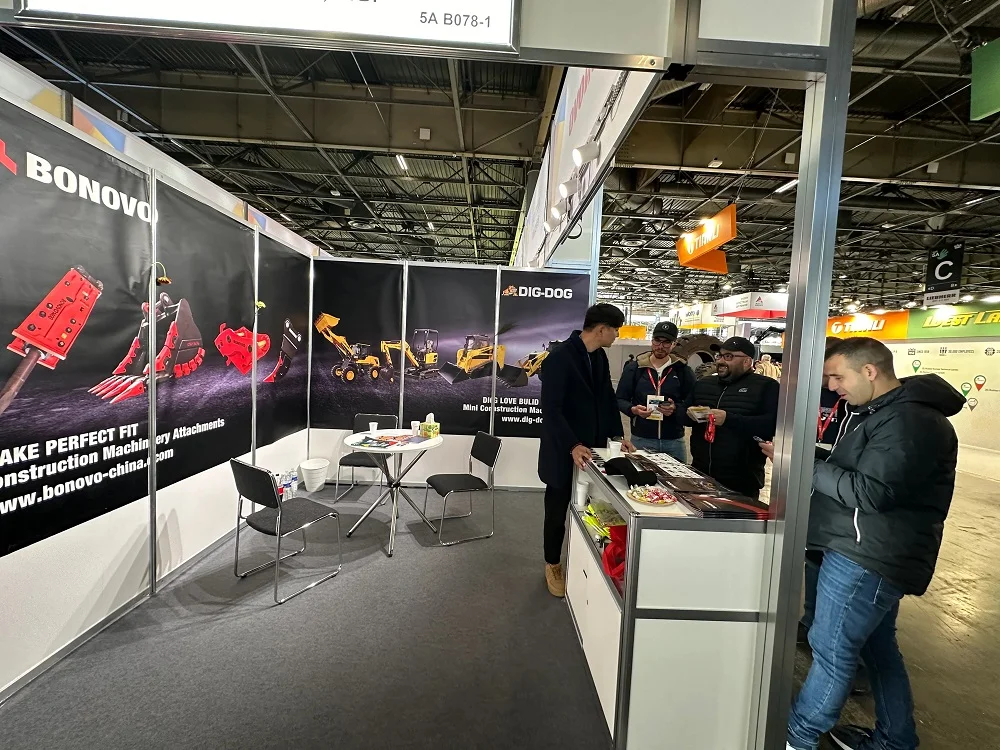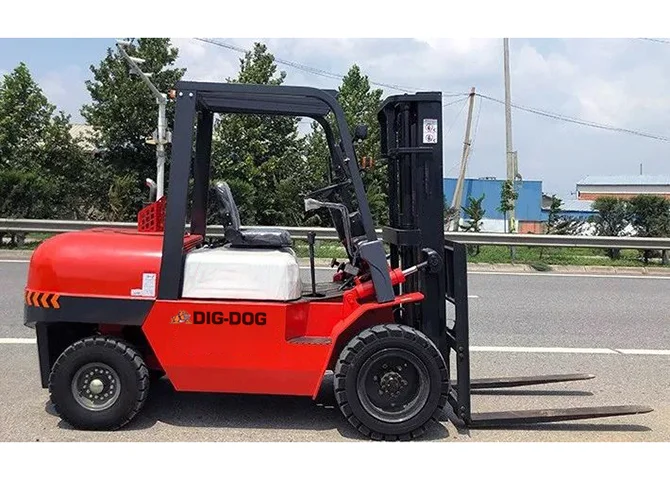Research selling wheel loaders? Choosing the right option can be a daunting task, but it doesn't have to be!
Wheel loaders are designed to perform a wide range of tasks and are ideal for those who need many from their machines. Wheel loaders can bucket, lift, carry and load materials for a variety of applications. It's this versatility that makes it one of the most popular construction machines on the market.
In addition, there are hundreds of different models from different brands, sizes and sizes.
So how to choose the right wheel loader?
Consider the size of the project
Make sure it lasts
Don't forget the counterweight
Know your bucket needs
Get the correct attachment
Make sure it is easy to repair and maintain
Get the right arm configuration for your project
Check that your operator is comfortable
Note its breakout power
Find the right tire for your job
Choose a seller who offers good after-sales service
1. Start With Size
Consider the size of the project before doing any further research. Understanding the scope of the job will give you a better idea of what size wheel loader will be best in the long run and what you will need it to do. Scale is critical to maximizing your ROI, so it's important to get it right from the start.
So, what size wheel loader works best?
When purchasing a wheel loader, the main factors to consider are operating capacity (bucket size, thrust and lifting capacity) and footprint. The correct size of a wheel loader usually depends on the surrounding equipment and operation.
Ask yourself these questions:
How much material do you need to move every day?
Do wheel loaders need to keep up with other machines?
What is the size/weight of the material the machine needs to lift or place?
When considering the size of your wheel loader, you need to compare 3 main elements:
horsepower
Tipping load (maximum load that can be handled safely and stably)
The size of the barrel
For simplicity, here's a quick list of wheel loader types based on horsepower:
80 HP or less = small wheel loader
80-150 HP = small or small wheel loaders
150-200 HP = medium range wheel loader
200-250 HP = heavy wheel loader
(Bonus tip: When comparing wheel loader models, compare total HP, not maximum HP, as the latter is steerable)
How will you transport your loader?
You also need to consider how to get your wheel loader to and from work. BONOVO, wheel loader manufacturer, states at this point, "If the wheel loader is moved by road, the transport width of the machine and any attachments need to be considered. Choosing an option that is too wide can cause trouble if used frequently between sites. "If you're doing a lot of road trips, or if the machine is working in different areas of a large construction site, a power shift transmission might be a better choice."
2. Go For Durability
You want your loader to stand the test of time, not just work. Must look so protect element, if protect screen, block light screen to wait. This is especially important if you are using a wheel loader to prepare a site with dense vegetation.
Ensure that vulnerable parts such as hydraulic hoses are adequately protected. A durable design will increase the reliability of your wheel loader, which is always a good thing!
3. Weight, Counterweight & Fuel Tanks, Oh My!
The ability of a wheel loader to lift and move material depends largely on its weight.
-- Case Architecture
While the weight of the machine itself will give you a good indication of its strength, don't forget the counterweight. Counterweights help improve lifting capacity, traction and machine stability.
On the other hand, fuel efficiency is just as important. Fuel is one of the biggest expenses for equipment owners, so make sure your loader is the right size to minimize excessive fuel waste. Other factors that affect fuel efficiency include:
Free time
Improper operation
Workplace travel model
4. Know Your Bucket Needs
Wheel loader. bucket
Wheel loaders are very flexible thanks to a large number of different attachments, but there is no denying that bucket loaders are the most popular.
It is essential to have the right bucket for your loader. To figure out what kind of barrels you need, work out your daily output and consider the density of the material you're handling. For those more versatile jobs, bucket specifications are based on the heaviest material your wheel loader will handle.
There is a bucket sized wheel loader to match each size, including:
Compact bucket (1001-1500mm)
Keg (1501-2000 mm)
Medium bucket (2001-3000mm)
Drum (3001-4000mm)
5. Get The Right Attachments (And Couple Up)
Loader-specific attachments are not cheap, but they are worth it if the job requires versatility. Some common loader accessories (except buckets) include:
Leaf blade
fork
Hold on to it
Its relative
Hedge trimmers
The ability to switch quickly between attachments expands the machine's capabilities. So if you're looking at long-term ownership, then investing in a fast coupler or quick knot will be worth it to make your attachments switch quickly and efficiently.
6. Is it easy to maintain?
Wheel loader engine
Another point to consider is the serviceability of the loader. Look for machines with easy access to maintenance points, such as hydraulic hoses and engines. You also need high-quality components and extended service spacing. The shorter the repair time, the longer the loader will be in the field.
7. Understand the department configuration
For most wheel loaders, there are three arm/connecting rod configurations. These include:
Weight (most common)
XR (extension)
XT (rest)
It's important to understand these connections, because each one serves a specific purpose. For example, XR is popular in agricultural/agricultural applications, while XT weapons are suitable for handling materials. So if your machine spends 75% of its time moving material with a fork, an XT configuration might be more appropriate. However, if you won't be doing much material handling (less than 25% of the time), z-bar may be the way to go.
8. More comfort = more productivity
Wheel loader cab
Without a doubt, comfort, while not the most important thing, should be a priority on your list. Whether you're operating it or you have a contractor, comfort can greatly improve on-site productivity.
If you can, jump into the driver's seat of the loader and test the following:
Smooth ride (easy to see why)
Air conditioning/heating
Reduce cab noise (create better and safer working environment)
Suspension seat (makes back work easier)
Joystick controls (check that the controls are direct and easy to use)
9. Note Its Breakout Force
The breakthrough force of the wheel loader is arguably one of the most important specifications. The breakthrough force is defined by ISO as "the maximum continuous upward vertical force, in Newtons, generated at 100 mm behind the leading edge of the loader bucket..."
Because of this, breakthrough force has a direct impact on productivity, which is a measure of machine power and lifting capacity. So be sure to pay attention to the power of breakthrough, which should be found in any product manual specification.
10. Wheel loader tires
Type of loader tire
Generally speaking, for medium - large wheel loaders, tires will play a good role. However, for small wheel loaders, you can get more out of your machine if the right rubber is installed. Other things to consider when it comes to tyres are the weight of the machine (for the right size tyre) and the speed of the loader.
Wheel loaders have 4 main tire types:
Bias tyres - suitable for gravel, pits and quarries
Radial tyres - Better control at high speeds, providing good traction and buoyancy
Solid tyre - ideal for scrap yard and industrial applications
Floating tyres - wider than other tyres, ideal for soft or muddy ground conditions
So, depending on your project, you'll want to check the tires on the loader for sale. Worst-case scenario, you can always buy new tires.
11. After-sales support
Finally, as with any machine purchase, you want to make sure your machine has the right life support. Choose wheel loader from well-known manufacturers, let you feel at ease, let you enjoy a solid, durable, hard-working machine.
Have we missed anything in this list? Please tell us. Look at the wheel loaders for sale.
 BONOVO Group at INTERMAT 2024 Paris Exhibiton
BONOVO Group at INTERMAT 2024 Paris Exhibiton
 A Ultimate Guide to Clamp Forklifts and Attachments
A Ultimate Guide to Clamp Forklifts and Attachments
 How To Choose The Right Compact Wheel Loader
How To Choose The Right Compact Wheel Loader
 How Much Does a Forklift Weigh?
How Much Does a Forklift Weigh?